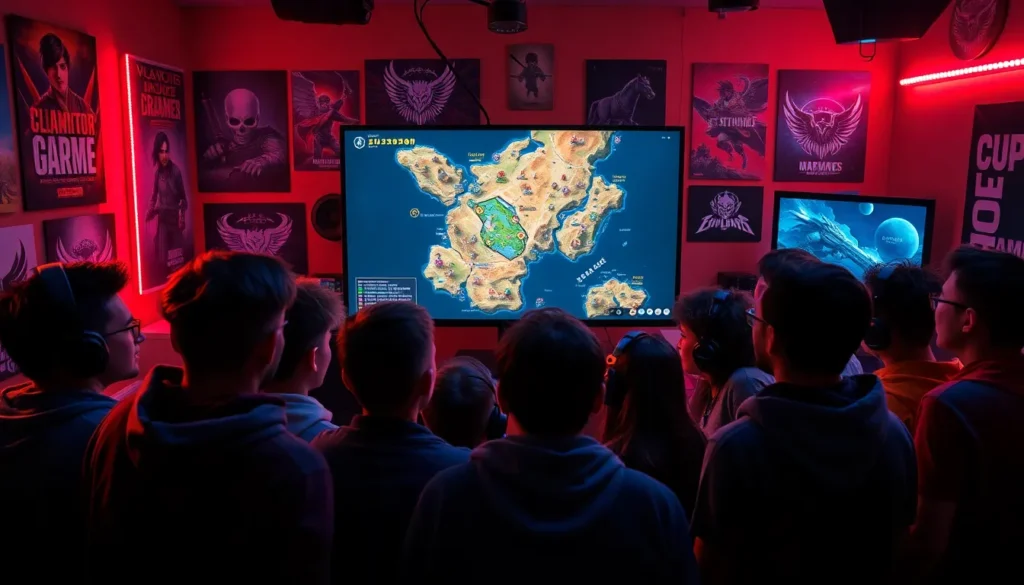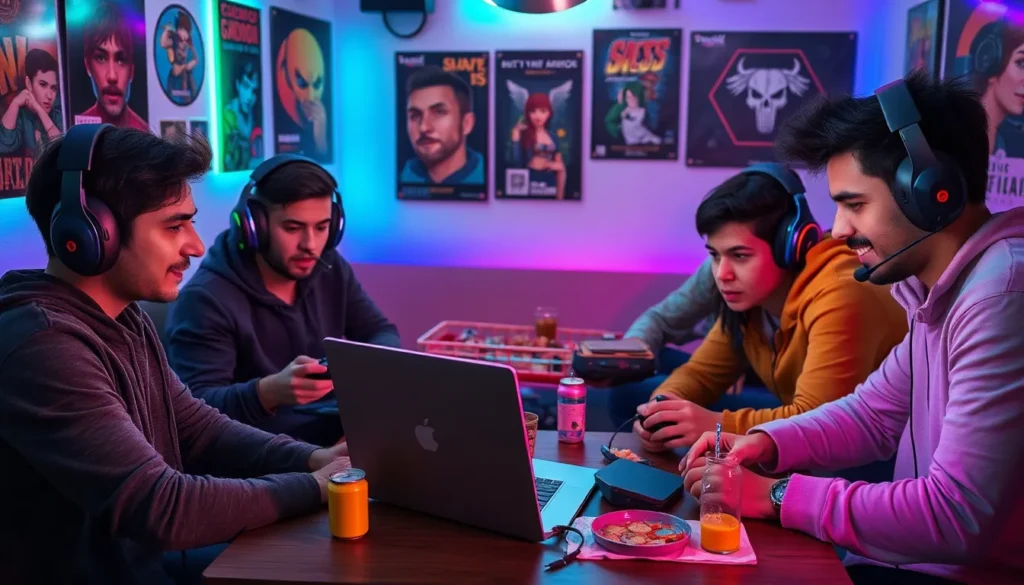Table of Contents
ToggleIn the fast-paced world of gaming, map rotation is the ultimate game-changer. It’s like a fresh pair of socks—suddenly everything feels new and exciting. Players everywhere eagerly await the latest updates, wondering which beloved battlegrounds will make a comeback and which ones will take a well-deserved vacation.
With each rotation, the thrill of discovery reignites, bringing players back into the action. Whether it’s a nostalgic return to a classic map or a bold new design that challenges even the most seasoned veterans, map rotation news keeps the community buzzing. So grab your gear and get ready to dive into the latest updates that promise to shake things up and keep the game fresh. After all, who doesn’t love a little chaos mixed with strategy?
Overview of Map Rotation News
Map rotation updates shape the gaming environment significantly. Developers frequently introduce new maps while also reintroducing classic favorites. Players express excitement with announcements revealing upcoming changes. Each rotation brings diverse gameplay experiences that keep everyone engaged.
Recent updates highlight a trend towards community feedback. Developers pay attention to player preferences, leading to more strategic map design. Nostalgic maps continue to resurface, increasing player happiness and encouraging participation. Innovative maps prompt players to adapt their strategies, enhancing overall competitiveness.
Examples of popular maps often include those that foster unique gameplay mechanics. For instance, classic maps like “Dust II” remain fan favorites due to their strategic depth. Newer maps often showcase creative designs, adding fresh challenges. Seasonal map rotations encourage exploration while maintaining a sense of familiarity.
Game developers utilize social media platforms for map rotation announcements. Regular communication builds anticipation within the community. Timing is crucial; ensuring updates align with community events maximizes player engagement. Overall, the dynamic nature of map rotations contributes to a vibrant gaming culture, fostering discussion and camaraderie among players.
Tracking map rotation news and reacting promptly helps retention rates among gamers. Elevated excitement across various gaming communities reflects the importance of these updates. Enthusiastic feedback from players serves as a motivator for developers to innovate continuously. These interactions create a thriving atmosphere within the gaming world.
Recent Developments in Map Rotation

Recent updates in map rotation significantly influence gameplay. Excitement builds as players anticipate which popular maps will return or be introduced.
Major Changes in Popular Games
Significant map changes affect many popular games. For instance, “Counter-Strike: Global Offensive” introduced alterations to “Inferno,” enhancing the gameplay experience. Similarly, “Fortnite” recently added new biomes, reshaping map strategies. In tactical shooters, developers focus on refining existing maps and optimizing layouts to increase competitiveness. These changes lead to new gameplay dynamics that challenge players’ strategies. Engaging with fresh map elements keeps the player base active and eager for upcoming modifications.
Community Reactions
Varied responses from the gaming community highlight the impact of map rotation updates. Players often express enthusiasm on social media platforms and gaming forums after news about map changes is released. Mixed reactions arise, with some embracing nostalgia for classic maps while others welcome innovative designs. Community feedback shapes future map rotations as developers prioritize player engagement. Ongoing discussions surrounding the changes signal a vibrant gaming culture, demonstrating that players are keen to share their experiences. The community’s integrated response motivates developers to refine map designs and maintain player interest continuously.
Impact on Gameplay Experience
Map rotation significantly influences gameplay dynamics. Regular updates keep players engaged and excited.
Positive Effects on Player Engagement
Reintroducing classic maps excites veteran players, while debuting innovative designs attracts newcomers. Enthusiasm grows within communities as players share strategies for freshly rotated maps. The thrill of exploring new terrains enhances the overall gaming experience. Developers frequently listen to community feedback, resulting in maps that balance nostalgia and creativity. Gamers often find themselves reinvigorated, eager to adapt their tactics to fit newly introduced challenges. Social media buzz amplifies with each announcement, showcasing player interest and building anticipation among the gaming community.
Potential Challenges for Players
Map rotation can pose difficulties for competitive players. Each new update may disrupt established strategies, requiring gamers to relearn map layouts and develop new tactics. Frequently changing maps can lead to inconsistent team dynamics, as players adjust to teammates’ varied experiences with new terrains. Unfamiliarity with a rotated map can create frustration, particularly in high-stakes matches. This lack of predictability sometimes hampers confidence, especially for those relying on specific strategies tied to classic maps. Developers face the challenge of balancing excitement with accessibility, ensuring that all players can adapt effectively.
Future of Map Rotation Systems
Anticipated changes in map rotation systems promise to shape the gaming landscape. Developers increasingly focus on addressing community feedback, which influences new map design and rotation strategies. Enhancing competitiveness remains a priority, encouraging the introduction of diverse gameplay experiences.
Frequent map rotations keep players engaged. Nostalgic maps, such as “Dust II,” draw attention due to their established strategic depth, while innovative maps introduce creative elements. Players often embrace this balance between the familiar and the novel.
Ongoing updates in popular titles, like “Counter-Strike: Global Offensive,” highlight the importance of map refinement. Significant changes to maps, including modifications to “Inferno,” elevate player experience and challenge their strategies. Revolving new biomes in “Fortnite” reshapes strategies, adding layers to gameplay dynamics.
The excitement surrounding upcoming map rotations drives community interaction. Players share strategies for newly introduced maps across forums and social media. Such engagements foster camaraderie and serve as a catalyst for discussions that enhance the overall gameplay experience.
Striking a balance between nostalgia and innovation can challenge developers. Updates that disrupt established strategies compel players to adapt to new layouts and tactics. Flexibility becomes essential, especially in high-stakes matches where unpredictability can frustrate competitive players.
Monitoring community reactions allows developers to remain agile in their approach. As enthusiasm grows for classic and modern maps alike, ongoing discussions ensure that future rotations reflect players’ desires. Engaging with the player base enables developers to create a dynamic gaming environment that keeps interest alive.
Map rotation is more than just a feature; it’s a vital aspect of the gaming experience that keeps players engaged and excited. The blend of nostalgia and innovation in map design creates a dynamic environment where gamers can continuously explore new strategies and challenges. As developers listen to community feedback, they refine their approaches to ensure that each rotation offers fresh gameplay while respecting the classics.
The ongoing dialogue between players and developers shapes the future of gaming maps, fostering a community that’s both vibrant and adaptive. With each update, the thrill of discovery remains alive, promising that the gaming landscape will continue to evolve and captivate audiences for years to come.







